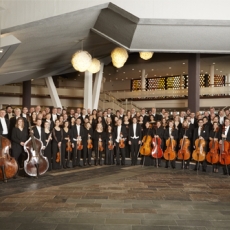Robin Ticciati & DSO - Bruckner: Symphony No. 6 - MusicWeb International
Bruckner’s Symphony No. 6 has never been my favourite; I have always preferred the monumental grandeur of the final two symphonies, but it is a work I enjoy listening to and, surprisingly, I have more recordings of it than any of the other symphonies. The booklet notes discuss a division of Bruckner’s symphonies into three main groups: numbers 0 to 2 are the early symphonies, numbers 3 to 5 are examples of his mastery over his new mature style, and 7 to 9 are the apotheosis of his symphonic development, with the Sixth lost somewhere between Fifth and the Seventh, alone and not really fitting into any of the groupings. The notes go on to say that while the musicologist and conductor Peter Gülke dismisses this argument, it could account for why the Sixth Symphony is sometimes seen as the outsider of Bruckner’s symphonic output. It is also apparently the symphony that Bruckner found the easiest to compose, as it is the only one to have not undergone a protracted gestation and features no amendments or revisions by the composer.
The first thing you notice when listening is how clean and sharp this recording is. While all the heft of a large symphony orchestra is there, it seems that Robin Ticciati has the Deutsches Symphonie-Orchester play with the sensibilities of a chamber orchestra, perhaps learned from his time in Scotland. Whatever the reason, this recording has a transparency that certainly brings this symphony to life. From the opening string melody which leads into the first tutti section when the brass powerfully enters, every note is clear and bright. This is reinforced in the development of the first movement and builds on the rhythmic intensity that Bruckner had developed in his previous symphonies, including the main theme which can be seen as a paraphrase of the main theme of the Fourth Symphony. The second movement has been described as the most perfect example of a sonata-form adagio after Beethoven’s Piano Sonata in B flat Major No. 29. Once again, the clarity of the playing of the Deutsches Symphonie-Orchester brings out the beauty and grandeur of this movement. This is followed by the Scherzo, one of the composers shortest and most unusual movements. Slower than you might expect, the opening section is fragmentary with beautifully played string figures and interjections from the wind section helping to build the tension of the music. The trio section is in the form of a slow Ländler and opens with a pizzicato string section in dialogue with the horn and woodwind, which is a key theme in this section. There is also reference to an earlier work, too, as here Bruckner quotes the main theme of his Fifth Symphony; the author of the booklet notes, Benedikt von Bernstorff, suggests “that he was wanting to prove that it is perfectly possible to compose a movement devoid of original ideas and distinct themes.” Although the final movement opens hesitantly, the momentum builds powerfully towards its conclusion in “festive splendour”, ending with a restatement of the main theme of the opening movement.
I really enjoyed this performance; there is an air of spontaneity and enjoyment in the playing. This is only the third recording that the Deutsches Symphonie-Orchester Berlin and Robin Ticciati have made together and it points towards a promising future. Although there is no suggestion that this is the start of a cycle of Bruckner symphonies, we can but hope, as there is no sign of the stodgy playing that sometimes afflicts recordings of his music. While it might not replace favourite recordings, it offers an alternative reading, in which the clarity of the performance makes it a real winner, enhanced by the excellent recorded sound and the informative booklet notes.


